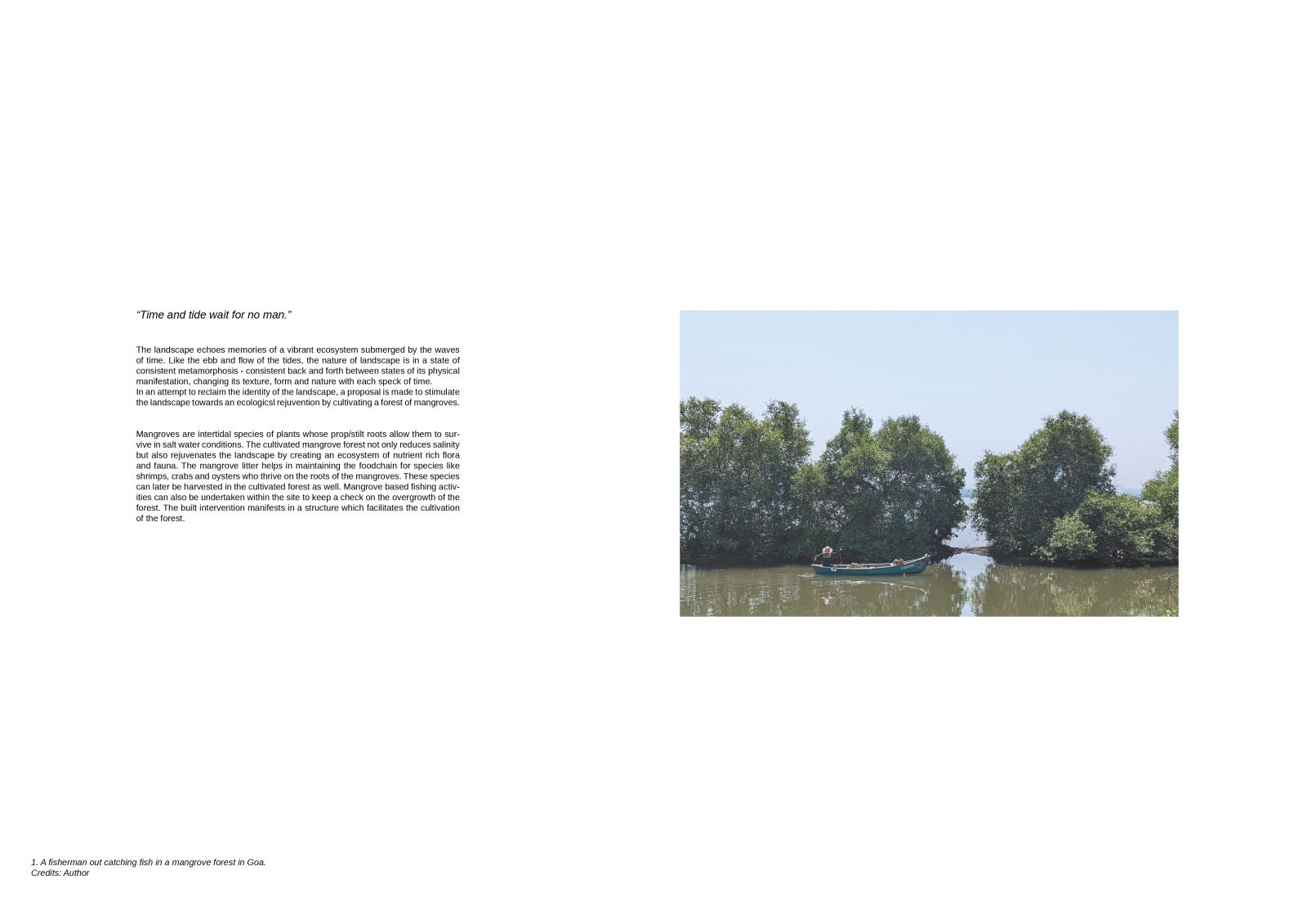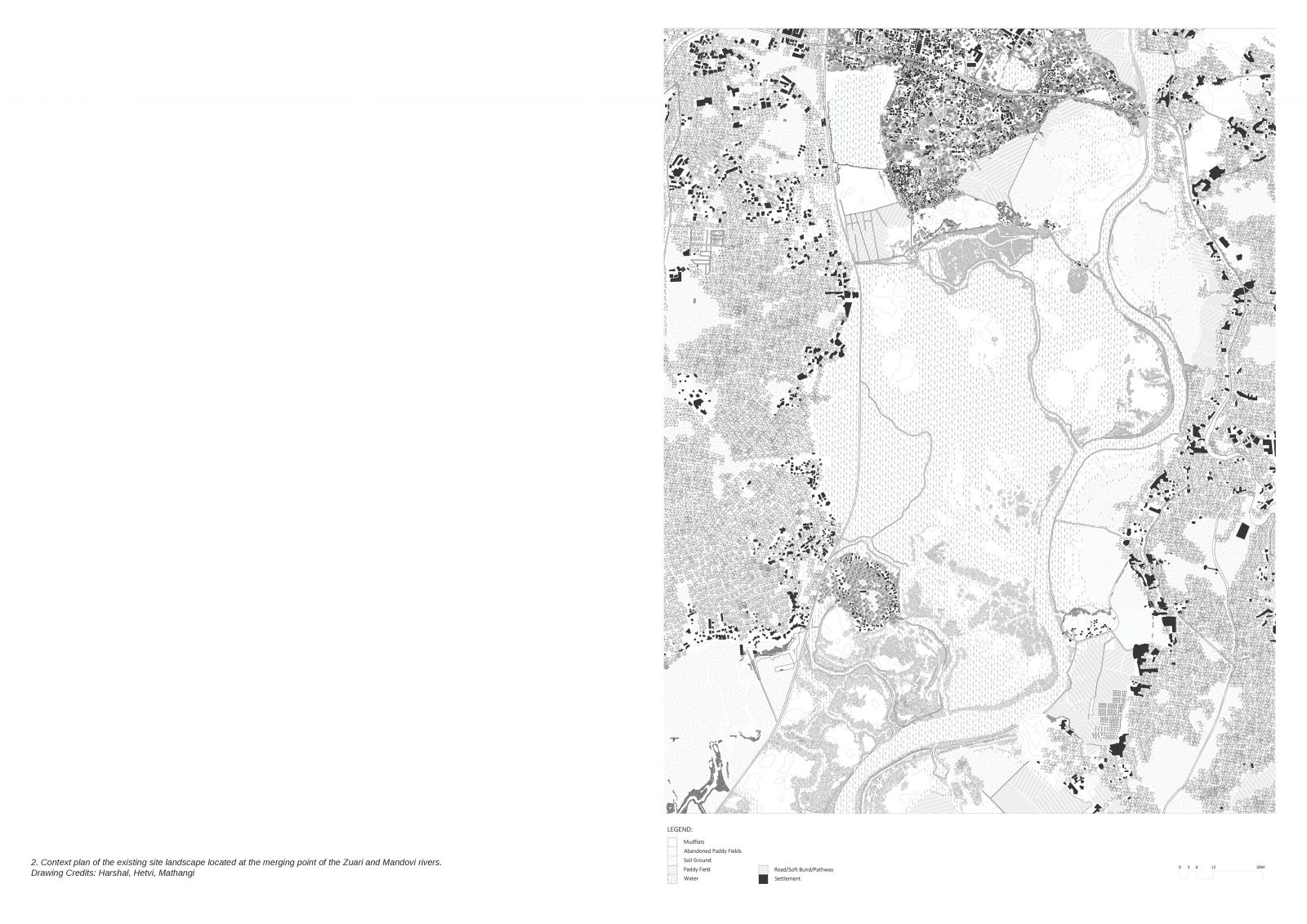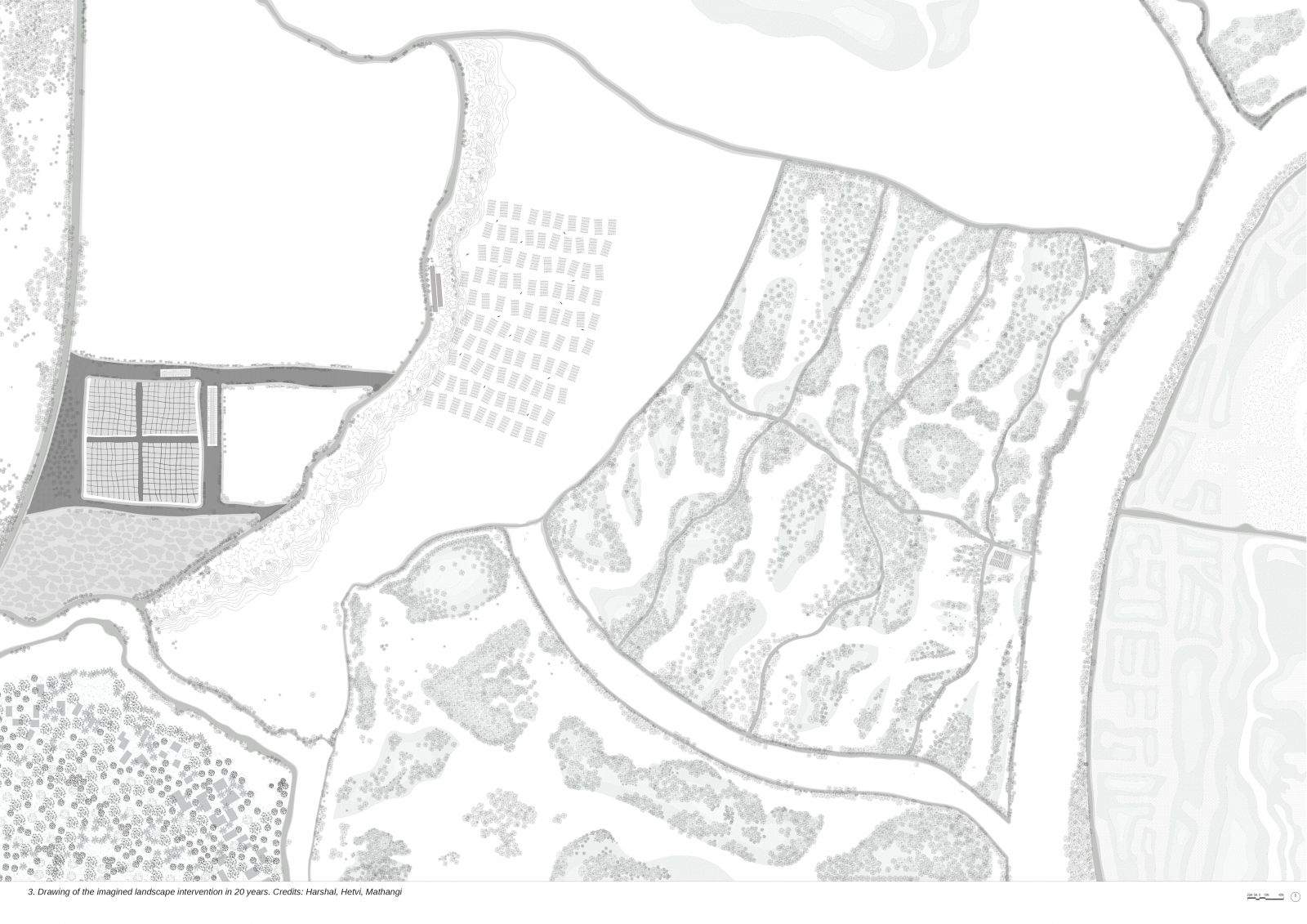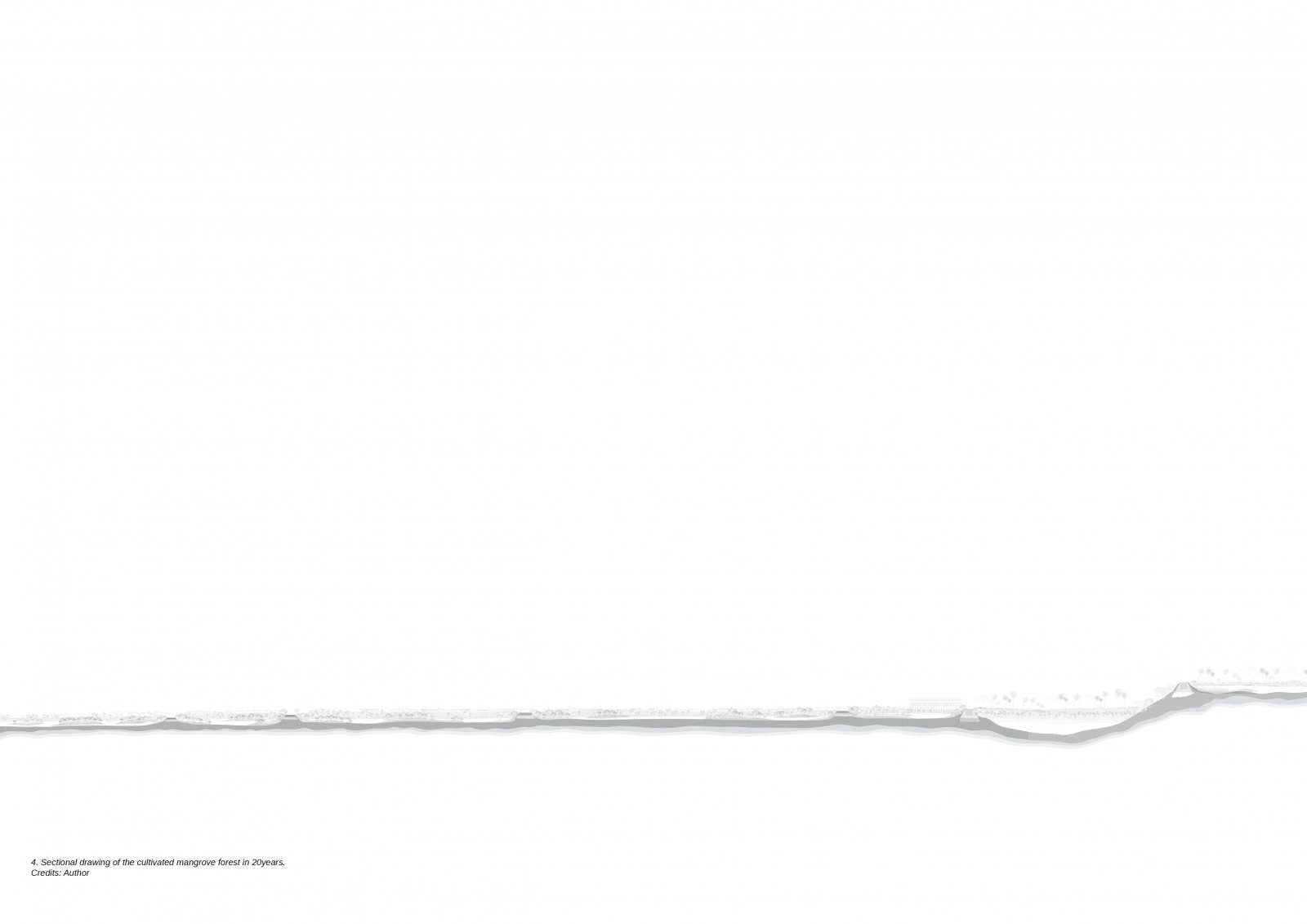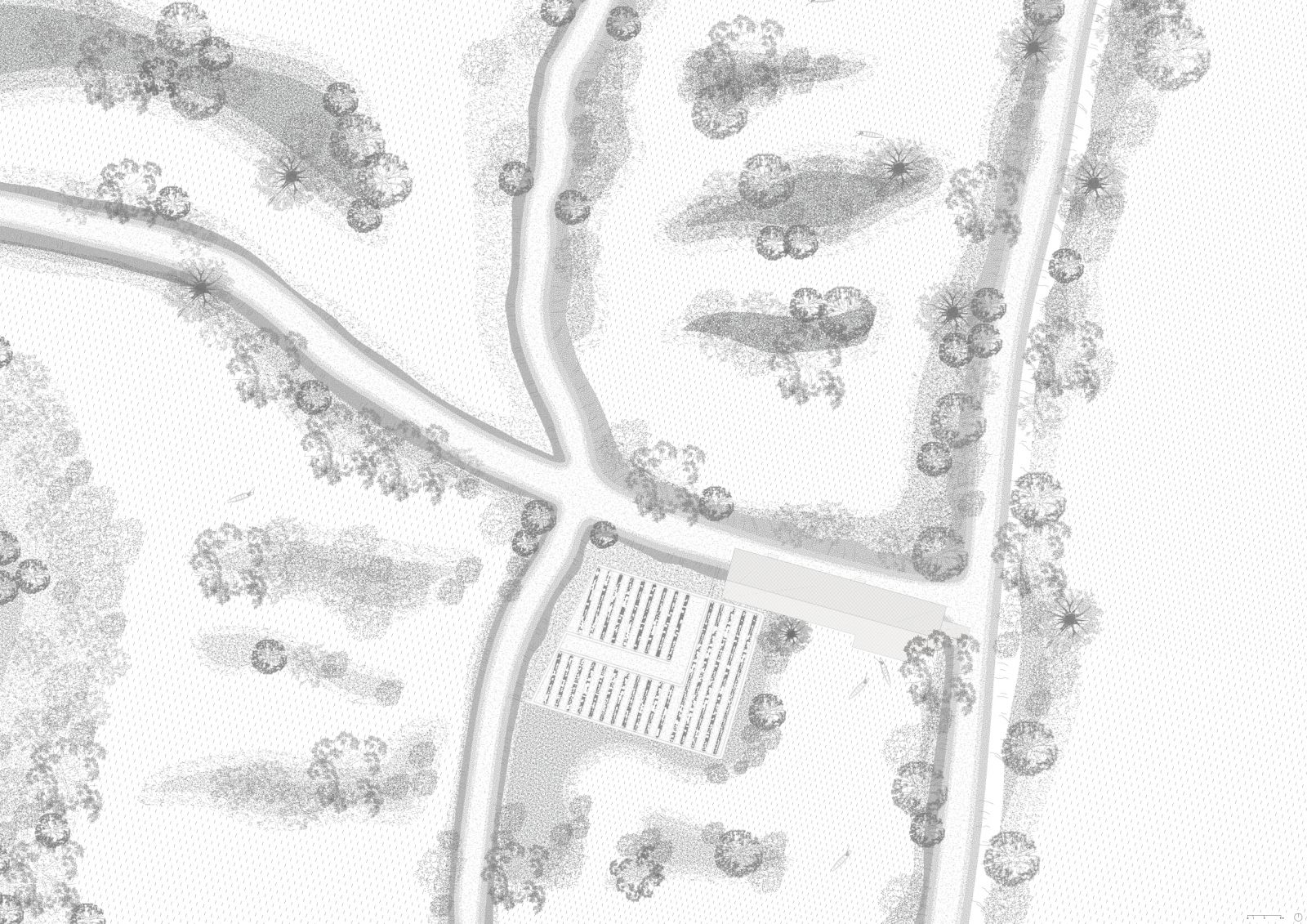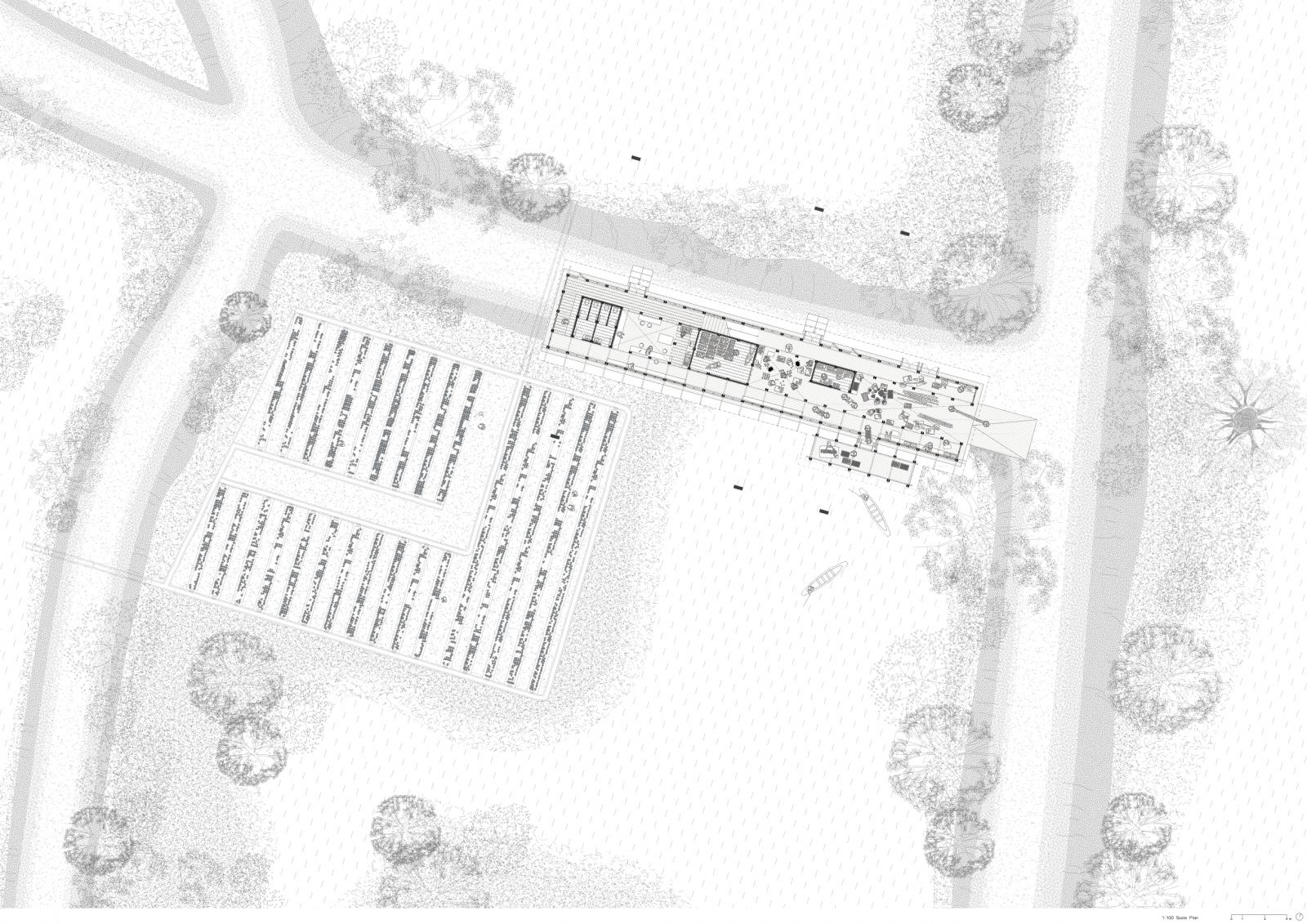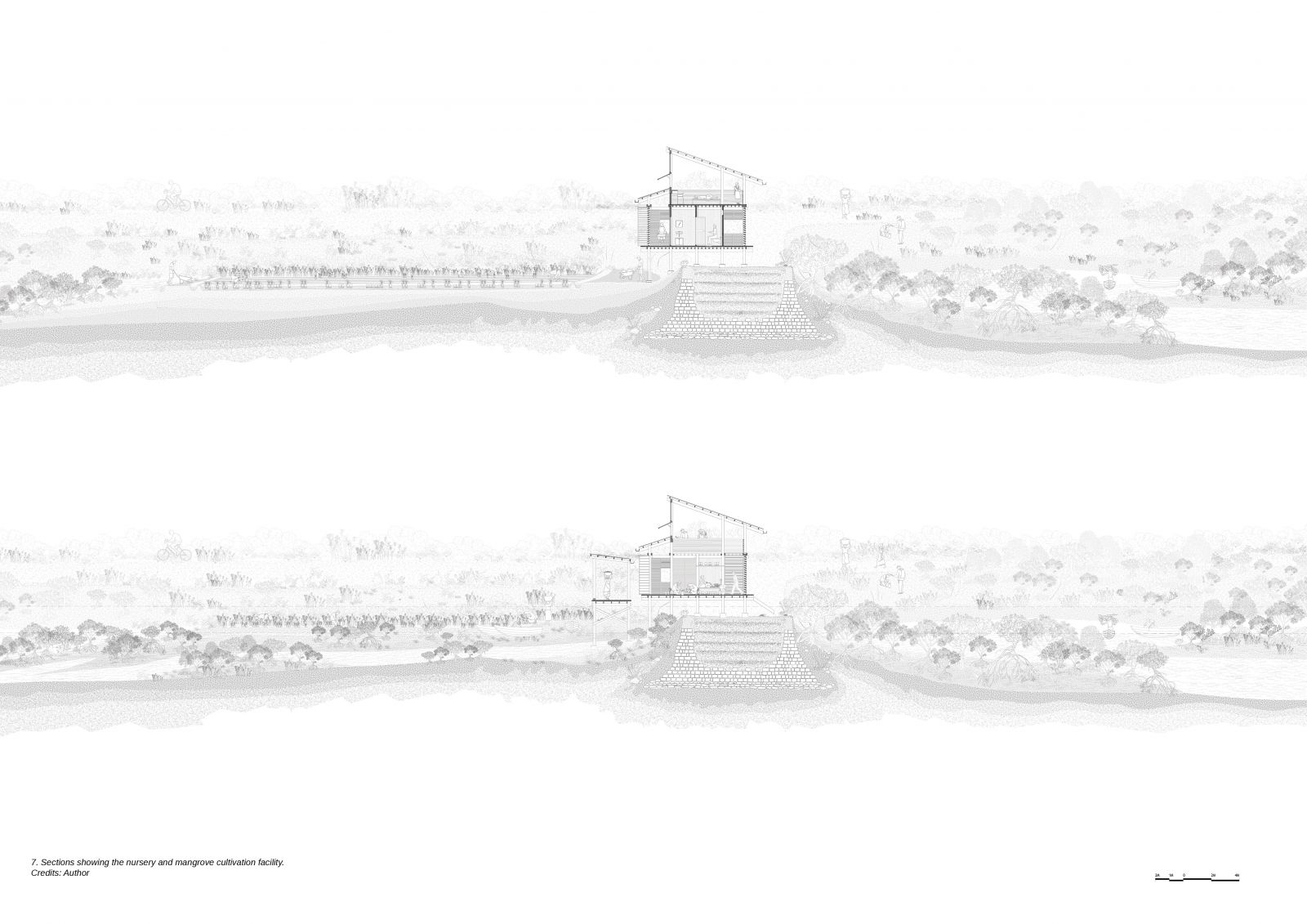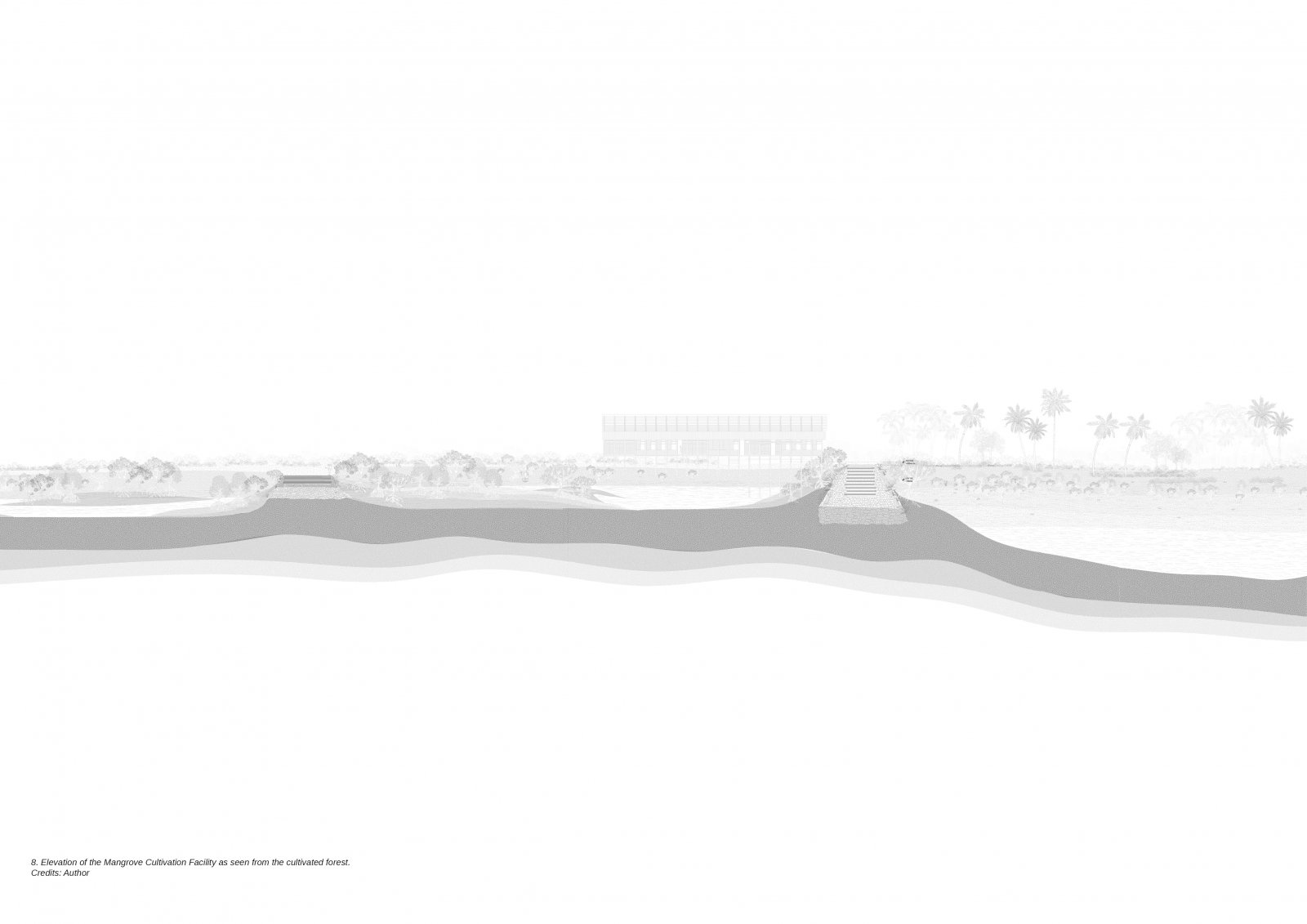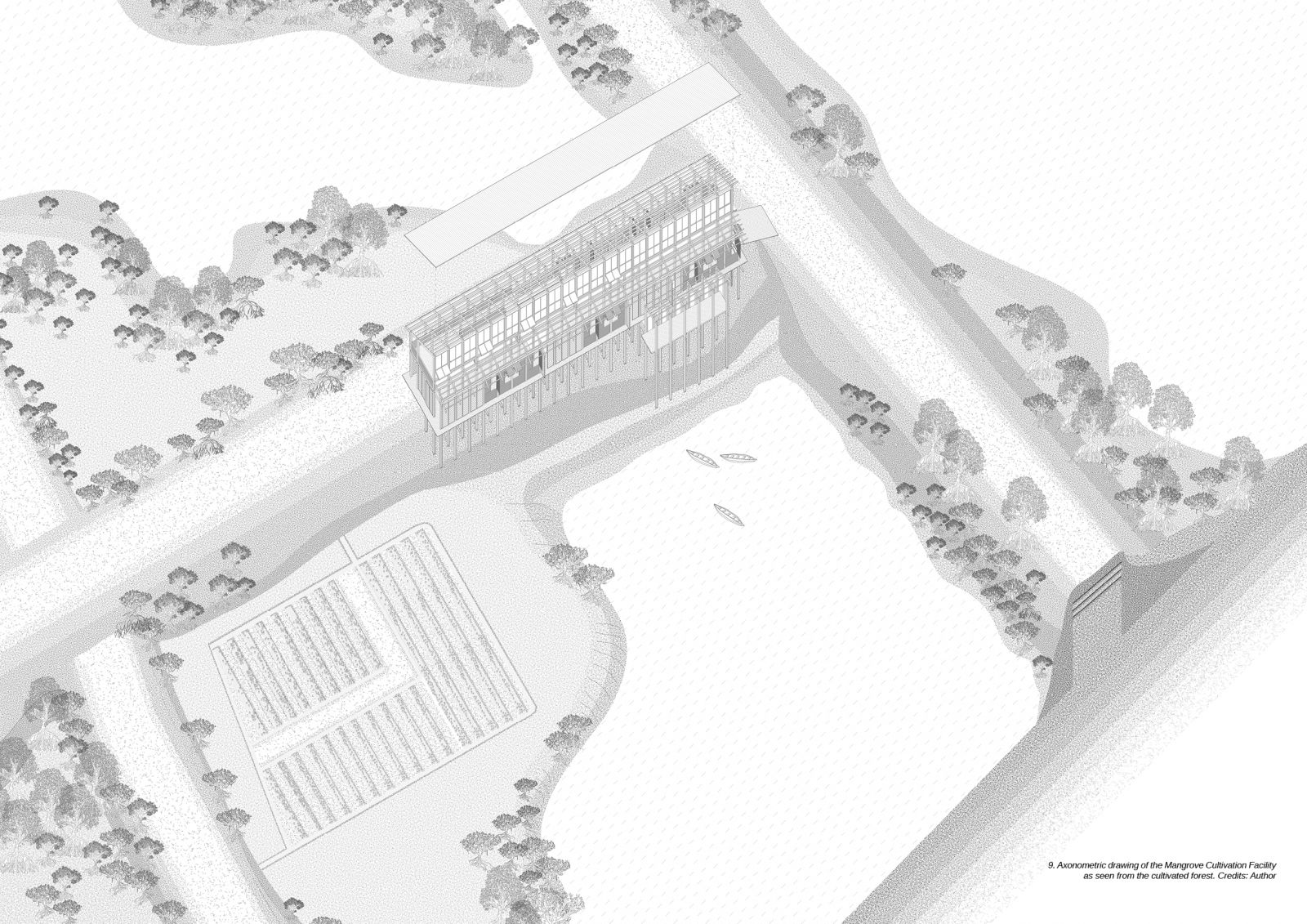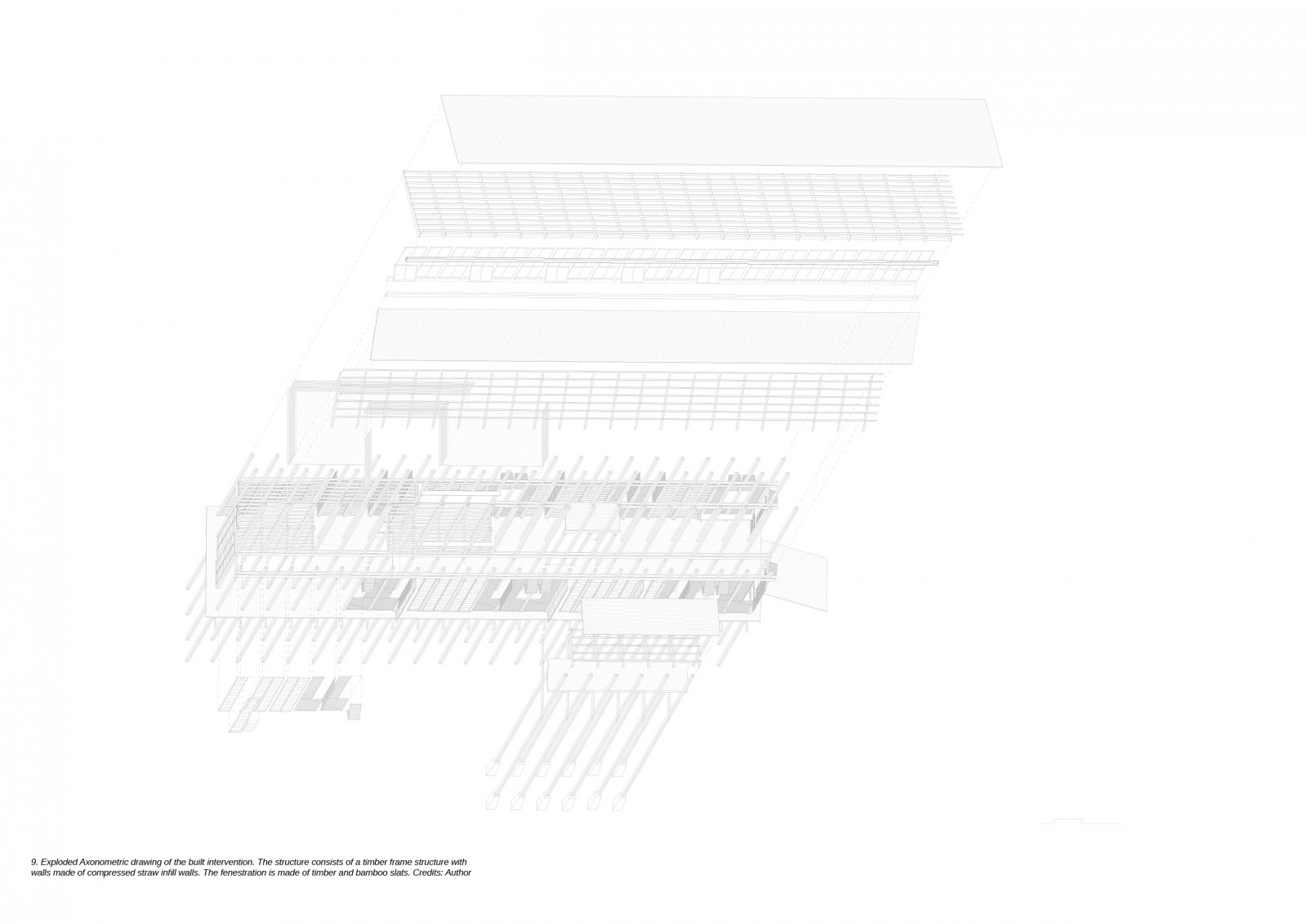Your browser is out-of-date!
For a richer surfing experience on our website, please update your browser. Update my browser now!
For a richer surfing experience on our website, please update your browser. Update my browser now!
Mangroves are intertidal plant species whose stilt roots/ pneumatophores allow them to survive in salt water conditions. The inundated mudflats in the site are modified to become cultivation grounds for a mangrove forest which not only helps in the process of site de-salination but also rejuvenates the landscape by creating a nutrient rich ecosystem. The prop roots also help in mitigating tidal fluctuations thereby allowing for the cultivation of sea-weed which absorbs pollutants before the water is used for salt extraction. The forest is facilitated by a mangrove nursery and cultivation center which acts as a node for collecting and nurturing propagules, cultivating and maintaining the forest. The landscape is reformed by building a network of bunds to stabilize the mudflats and prepare the site for mangrove growth. The collected samples from existing mangrove swamps (mostly Avicennia and Rhizophora species) are planted in bamboo pots which are then nurtured in the nursery for a period of six months. After initial germination, they are planted across various locations on the bunds and allowed to grow naturally with minimum maintenance. As the forest grows it becomes a habitation ground for fishes, shrimps, oysters and crabs. The built intervention follows a modular timber frame structure which allows it to functionally adapt to the needs of the forest over time.
View Additional Work